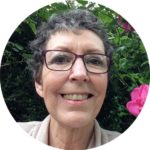Julie Wolfarth is an NCRI Consumer member of the NCRI Living With and Beyond Cancer and NCRI Clinical and Translational Radiotherapy Research Working Group (CTRad). Here she talks about her role as a patient representative and how sharing her experiences resulted in setting up a patient focus group to look at how we can improve communications on research, recruitment and late effects.

Patient representatives often have a bit of a tough time pushing at doors until we are finally let in and listened to. Persistence, patience, determination and having the badge of an NCRI Consumer certainly helped me. My passion is research, especially into radiotherapy and living with late effects.
It took me two years to get accepted onto my area’s Radiotherapy ODN (Operational Delivery Network) NOG (Network Oversight Group). A bit of a mouthful. Increasing recruitment into trials by 15% was at the bottom of the priority list, but not anymore.
But be careful what you wish for! Through the NOG I was asked to do a presentation at the annual British Institute of Radiotherapy conference on March 31st. Of course, I said ‘yes’ and then worried about it later. As I got closer to the deadline for submission of my presentation, I called on my colleagues from NCRI and the CTRad consumers to ask for stories and pointers. Contacts at NIHR CRN East Midlands helped me with the techy bit of inserting patient video clips and providing data. It went better than I could have hoped for. I received a fabulous email from the Head of Physics at Derby and I have his permission to quote him:
I was at the BIR meeting at the end of the last week and I had the privilege of listening to yourself, Nikki Blackler and Rachel Harris speaking about the patient experience. As a Physicist, this is not something that I generally get much exposure to (at conferences people from my profession tend to gravitate towards the meetings that have the greatest technology content by default). It was therefore something of a revelation to me to find that I was quickly convinced that I had made the better choice by going left-field and choosing Stream A on Thursday morning. I personally found that this rare chance to connect to people undergoing radiotherapy (and general cancer) treatment was enormously valuable (and, I have to say, emotionally moving). The fact that the insights provided to us came from those that have deep prior knowledge of our discipline greatly amplified the impact.
Roy Crawford? Head of Radiotherapy Physics, University Hospitals of Derby and Burton NHS Foundation Trust
I’ve already had a meeting with the Derby Cancer Business Unit, (helpfully organised on the same day I was having my cancer treatment), and we have agreed to set up a patient focus group to look at how we can improve communications on research, recruitment and late effects. We agreed on a date of October to launch a new section of the University Hospitals of Derby and Burton (UHDB) website which will tie in with the launch of the new NIHR ‘Be part of research’ website. NIHR are on board and, of course, I’ll be going back to NCRI consumers to get their views. I’d love to hear your views.
Finally, a bit about me. I was diagnosed with advanced inoperable breast cancer 20 years ago. Chemo, surgery, radiotherapy and hormone drugs kept me clear for 14 years. I was diagnosed with Head and Neck (parotid) cancer 16 years ago. Surgery and radiotherapy. Then 6 years ago I was diagnosed with secondary breast cancer (regionalised). Two lots of surgery, two lots of radiotherapy and I’m now on the last drug available and under surveillance. I sit on two NCRI groups. the Living With and Beyond Cancer (LWBC) late effects workstream and CTRad. I do lots of other things with NHS England and CRUK and sit on various research trial steering groups. I do have a life outside of cancer, as a part-time tour guide at Grimsthorpe Castle, dog owner and keen gardener and cook.
To sum up, my message is to carry on pushing through the barriers. Use the organisations you are connected with – they help to open doors and give us credibility. And the patient voice is a powerful tool.